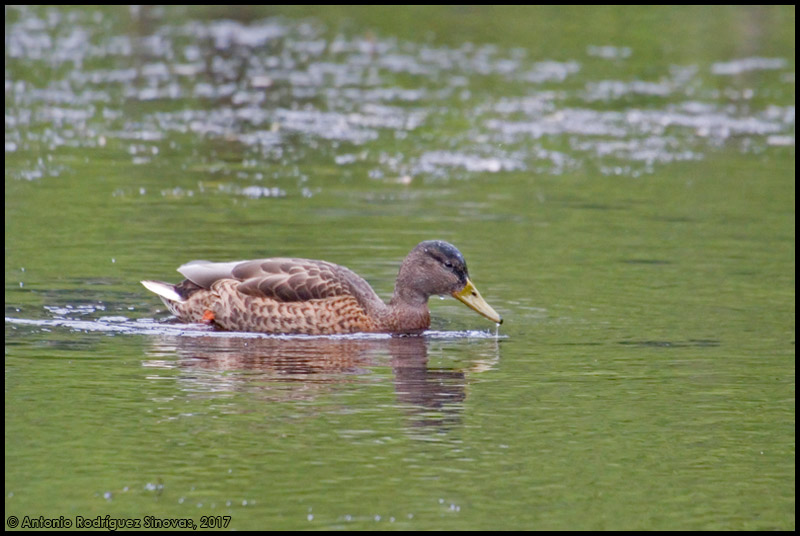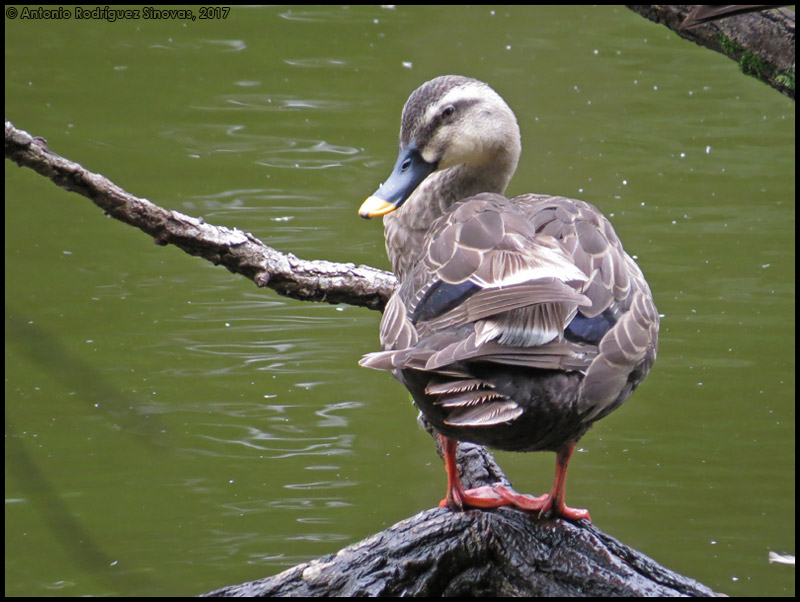En esta entrada muestro algunas de las especies más comunes de la isla principal de Japón, la isla de Honshu, que pude ver en un viaje reciente a las regiones centrales de Kansai y Chubu. No era un viaje ornitológico, sino de turismo general, por lo que no pude ver muchas especies, y seguramente las que muestro son las más comunes. El viaje se inició en Osaka, en la región de Kansai, para seguir hacia Kioto, Kanazawa, Shirakawa-go, Takayama y Yamanouchi (ambos en los Alpes japoneses), y acabar en Tokio.
In this entry I show some of the most common species of the main island of Japan, the island of Honshu, that I saw in a recent trip to the central regions of Kansai and Chubu. It was not an ornithological trip, but general tourism, so I could not see many species, and surely the ones I saw were the most common. The trip began in Osaka, in the Kansai region, and continued to Kyoto, Kanazawa, Shirakawa-go, Takayama and Yamanouchi (both in the Japanese Alps), and it ended in Tokyo.
La crónica de viaje de eBird, junto con el mapa de las principales zonas visitadas y la lista de aves observadas en Japón, puede encontrarse en este enlace.
The eBird trip report, showing a map with the main visited locations, together with the complete list of bird species seen in Japan, can be seen in this link.
1. Osaka.
Osaka es una de las ciudades más grandes de Japón y cuenta con pocas zonas verdes, con lo que las especies observadas fueron pocas. Algunas tórtolas orientales, cuervos picudos y poco más.
Osaka is one of the largest cities in Japan and has few green areas, so there were few bird species. Some Oriental turtle-doves, large-billed crows, and little else.
2. Nara.
Nara fue la primera capital de Japón y un destino turístico por excelencia. Además es famosa por los ciervos sika que abundan es sus zonas verdes.
Nara was the first capital of Japan and an important tourist destination. It is also famous for the sika deers that abound in its parks and gardens.
3. Kioto.
Turísticamente impresionante, Kioto tiene también algunas zonas verdes que merecen la pena explorar. Yo visité los jardines del palacio imperial, que me permitieron observar algunas especies. Al este hay zonas montañosas que merecen una visita más pausada.
Touristically impressive, Kyoto also has some green areas that are worth exploring. I visited the gardens of the imperial palace, which allowed me to observe some species. To the east there are mountainous areas that deserve a more calm visit.
4. Arashiyama.
El río Katsura alberga algunas especies, incluyendo milano negro, garza real y garceta común y grande, así como cormorán común y pequeños paseriformes.
The Katsura River houses some species, including black kites, grey heron and little and great white egrets, as well as great cormorant and small passerines.
5. Chirihama Nagisa Driveway (playa / beach).
En la playa cercana a Kanazawa pudimos observar un águila pescadora, un par de garcetas intermedias y multitud de gaviotas japonesas.
In the beach near Kanazawa we could see an osprey, two intermediate egrets, and several black-tailed gulls.
6. Shirikawa-go.
La aldea histórica de Shirakawa-go está rodeada de campos de arroz, además del río Shokawa. Prácticamente no vimos ninguna especie, excepto un par de ánades picopintos chinos en el río.
The old town of Shirakawa-go is surrounded by rice fields and the Shokawa river. However, we only managed to see two chinese spot-billed ducks in the river.
7. Takayama (Río Shokawa).
Un corta visita al rio Miyagawa, en Takayama, fue bastante productiva, con más ánades picopintos chinos, lavanderas de hasta 3 especies, garzas reales y diferentes paseriformes.
A short visit to the Miyagawa river, in Takayama, was productive, and we saw more spot-billed ducks, several wagtails of three different species, grey herons and some passerines.
8. Valle de Kamikochi (Parque Nacional Chubu-Sangaku).
Sin duda la visita más interesante desde el punto de vista ornitológico. Se trata de un pequeño valle situado en los Alpes japoneses, rodeado de bosque y montaña, y que alberga un buen número de especies, incluyendo pato mandarín y ánade real, tórtolas orientales, pico kizuki, y varios paseriformes.
With no doubt, this was the most interesting visit from the ornithological point of view. It is a small valley located within the Japanese Alps, surrounded by forest and mountain, and home to a number of species including Mandarin duck and Mallard, Oriental turtle doves, japanese pygmy woodpecker, and various passerines.
9. Jigokudani Monkey Park y Río Kakuma (Yamanouchi).
Conocido por los macacos japoneses que alberga, que en invierno se bañan en las piscinas termales, el parque situado alrededor del Jigokudani Monkey Park, y el río que atraviesa la cercana Yamanouchi merecen una visita. Aunque la diversidad no es impresionante, si pude añadir algunas especies nuevas, como el escribano de Brandt o el agateador norteño.
Known for the abundant japanese macaques it houses, which in winter bath in its thermal pools, the park located around the Monkey Park, and the river that crosses the nearby Yamanouchi deserve a visit. Although the diversity is not impressive, I could add some new species, such as meadow buntings or eurasian treecreeper.
10. Arakurayama Sengen Park (Fujiyoshida).
Breve visita de camino hacia Tokio para ver el Monte Fuji desde un conocido parque. Como ocurre muchas veces, estaba parcialmente cubierto, ya el Fuji no pudo observarse completamente. Por suerte apareció un gavilán que nos distrajo un rato.
This was a short visit on the way to Tokyo to see the Mount Fuji from a well-known park. As often happens, it was partly covered, and the Fuji could not be completely observed. Fortunately, an eurasian sparrowhawk appeared at the distance.
11. Tokio.
Como cualquier ciudad grande, Tokio no es muy amable con las aves. Sin embargo, es posible observar algunas en el Shinjuku Gyoen National Garden o en el Yoyogi Park. También en la isla de Odaiba se pueden observar gaviotas y cormoranes japoneses.
Like any other big city, Tokyo is not very friendly with birds. However, it is possible to observe some in the Shinjuku Gyoen National Garden or in the Yoyogi Park. Also the Odaiba island allows you to observe some gulls and japanese cormorants.
En este enlace se puede ver el listado de especies observadas cada día.
In this link there is a list of observed every day.








































































